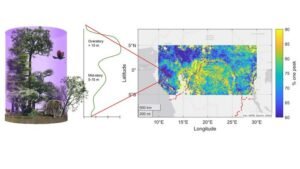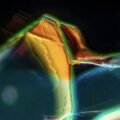A NASA space laser is finally helping researchers reveal many of the hidden secrets and unsolved mysteries of the Amazon rainforest and the world’s other dense rainforests.
Known as GEDI (Global Ecosystem Dynamics Investigation), the revolutionary laser was mounted on the International Space Station (ISS) back in 2018, with the express goal of peering deep into the rain forests and tropical jungles of the world to reveal parts of the Earth’s rainforests and hidden surface that have yet to be explored or mapped in any significant detail.
This research will not only help map a part of the world that has evaded detailed mapping and understanding for centuries but could prove a key tool in fending off the worst effects of a shifting global climate.
Very Little Has Been Revealed About the Amazon since the 1500s
When Spanish explorer Francisco de Orellana first ventured into the depths of the Amazon rainforest, he was astounded at the level of dense vegetation he saw. Other Western explorers soon followed, and like Orellana, they too were struck at the density of this massive, expansive forest. In fact, some of those explorers were so struck by the spectacle that according to the researchers behind this latest study, some of them described it as a “horror vacui,” with dense trees and vegetation that seemed “anxious to fill every available space with stems and leaves.”
In the nearly five centuries since, precious little light has been shed on the Amazon, especially when it comes to the millions of animal species and dense tree canopy that plunges much of the forest floor into near darkness even in the middle of the day.
Now, an international team of researchers is using GEDI to peer deeper into the rainforest than ever before, resulting in a 3D map of each layer from the top of the canopy down to the ground.
Rainforest Canopies More Mysterious Than the Surface of Mars
In a press release announcing their incredible findings, the team of researchers behind the effort note that “We know less about the rainforest canopy, where most of the world’s species live, than we do about the surface of Mars or the bottom of the ocean.”
However, they note this is about to change thanks to GEDI.


Mounted on the ISS, GEDI shoots a laser from space into the Amazon rainforest canopy thousands of times a day. And unlike previous mapping efforts that are restricted to the top of the tree layer, this powerful laser is allowing the researchers the ability to scan and map the forest layer by layer, all the way down to the ground. This level of unprecedented detail may reveal hidden structures or lost civilizations, but the team doing the research also says there is a pressing, modern-day reason behind their work.
“Most of the world’s species live in tropical forests, and most of those make use of the canopy, and yet, we know so little,” said Professor Chris Doughty, a researcher from Northern Arizona University and the study’s first author. “Rainforest structure matters because it controls how animals access resources and escape predators, and these findings will help us understand tropical forest animal’s susceptibility to climate change.”
Researchers in medicine and other fields often note that many cures and treatments for the world’s most devastating diseases may be waiting for discovery inside this dense landscape, meaning that efforts to understand and potentially protect this bastion of life could end up being critical to the survival of the planet and humanity itself.
Also, the dense rainforest and its counterpart around the world play a critical role in carbon storage, which helps the planet stave off the most devastating effects of climate change. So, the researchers note that, unlike previous satellites that could only map the top of the forest canopy, the unprecedented detail offered by the NASA space laser should help scientists from a wide range of fields do what they can to protect the planet while also learning so much about a part of the world that has literally been shrouded in mystery for centuries.
“A key difference between GEDI and many other satellites is its measurement of three-dimensional canopy structure,” said Hao Tang, a professor in the Department of Geography at the National University of Singapore (NUS) and co-author of the paper. “Conventional satellites, while providing valuable data on land cover and canopy greenness, often lack the detailed vertical information offered by GEDI. This vertical information is crucial for understanding ecosystem dynamics, carbon storage, and biodiversity that cannot be easily seen from typical satellite images.”
Work by GEDI Already Revealing Many Mysteries of the Amazon
Published in the Journal Environmental Research Ecology, the study offers a few insights that have already been gleaned by GEDI.
For example, data revealed that about 80% of the Amazon and about 70% of the Southeast Asian and Congo Basins have a peak number of leaves at about 15 meters above the surface, a finding that the researchers said ended up “debunking the fullest-at-the-top theory of early researchers.”
Also, while the forests and their makeups vary, the team found that across the globe, “deviation from more ideal conditions (like lower fertility or higher temperatures) leads to shorter, less stratified forests with lower biomass.”
“It was really surprising to see the dominance of this structure type because it differs from what we had learned in the classic textbooks on the topic,” Doughty said.
“These findings will not only help us understand how the millions of species that live in a rainforest canopy might acclimate to changing temperatures,” he concluded, “but also how much carbon these forests hold and how good they are at fighting climate change.”
Christopher Plain is a Science Fiction and Fantasy novelist and Head Science Writer at The Debrief. Follow and connect with him on Twitter, learn about his books at plainfiction.com, or email him directly at christopher@thedebrief.org.

